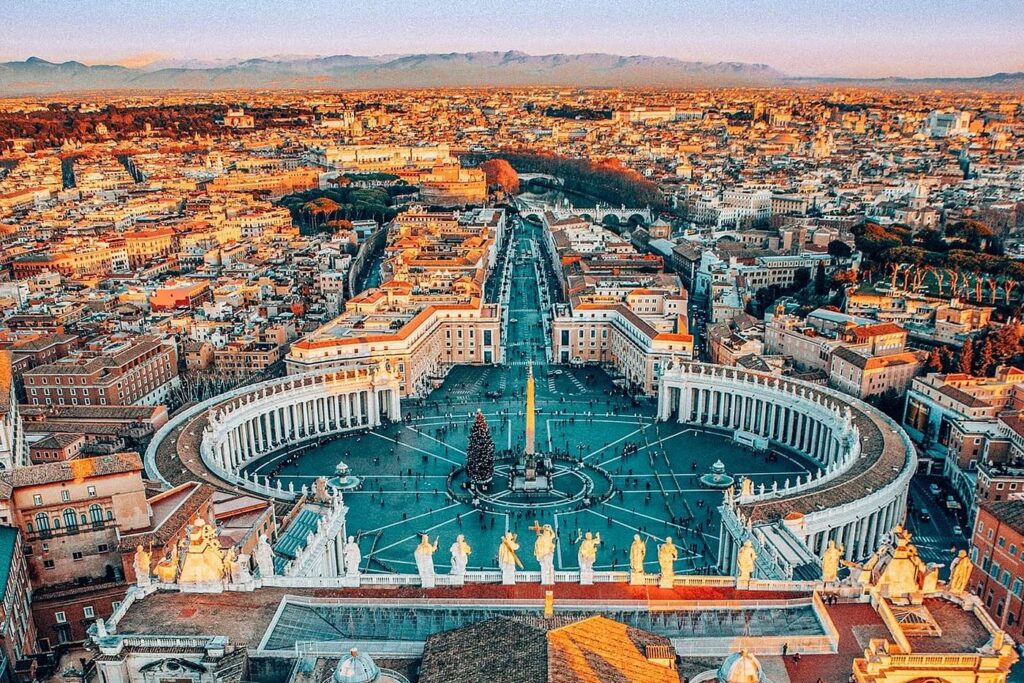Rome is a city that, at first glance, can be overwhelming. It’s layered: deep in history, alive with activity, and full of art, churches, ruins, and fountains than any human could ever hope to see in a single brief trip. But the truth is, you don’t need to see it all. To understand why people fall in love with Rome, you need only start with a few must-see attractions, the ones that get at the city’s core.
No need to rush through checklists or read every inch of a guidebook. Just take a step back and get to know the big corners of the Eternal City that have shaped history, art, and culture for ages.
1. The Colosseum
Let’s get the obvious out of the way. Yes, it’s touristy. Yes, you’ve seen it on postcards and Instagram a million times. But trust us – being in front of the Colosseum in real life is a different story altogether.
Built nearly 2,000 years ago, this massive amphitheater held over 50,000 spectators for gladiator battles, hunts for wild beasts, and even staged naval battles. Try to take a guided tour with underground access if you can; it gives a better sense of how the site actually functioned. Not only is it one of the most recognizable sights to see in Rome, it’s a testament to just how advanced and ambitious ancient Rome really was.
2. The Pantheon
Of all the buildings in Rome, the Pantheon might be the most quietly impressive. It doesn’t look like much from the outside – just a huge dome with a plain facade. But step inside, and you’ll feel it immediately: this place is special.
The Pantheon was built as a temple to all the gods and has been in continuous use for nearly 2,000 years. The dome, with its opening in the center, is still the world’s largest unreinforced concrete dome. No steel, no hidden framework – just Roman engineering at its finest.
3. Piazza Navona
Once a Roman stadium for athletic contests, the space was transformed into one of the city’s most beautiful squares, complete with fountains, street artists, and sidewalk cafés. At the center of Piazza Navona is Bernini’s Fountain of the Four Rivers, a baroque masterpiece that represents four great rivers of the world. In the summer, you’ll hear live music, with the smell of espresso and roasting chestnuts in the air. It’s the kind of place you don’t need to plan for – just go, see it for yourself, and enjoy its atmosphere to the fullest.
4. Vatican City
Technically outside Italy, Vatican City is the world’s smallest independent state – and the residence of some of the most breathtaking art and architecture in human history. Start with St. Peter’s Basilica, where Michelangelo’s Pietà and the vast dome leave most visitors speechless. Then there are the Vatican Museums, home to Raphael’s rooms, classical sculptures, and of course, the Sistine Chapel. Seeing Michelangelo’s ceiling frescoes in person is one of those moments that sticks with you, no matter how many photos you’ve seen beforehand.
Book a skip-the-line or early-morning tour. The museums fill up fast, particularly during the summer, and visiting them in relative quietness makes all the difference. If you’ve got time and inclination, there are even guided tours that will take you through the Vatican Gardens or the underground necropolis.
5. The Roman Forum and Palatine Hill
It’s easy to pass by the Forum on your way from the Colosseum and assume it’s just another pile of ruins. But take the time to walk through it, as you’re walking through the literal center of ancient Roman life.
This was where speeches were made, deals were done, temples were built, and processions marched through. The Forum was the heart of the republic and the empire, and you can still see remnants of what made it so great: soaring columns, triumphal arches, and wide stone streets that echo with the past.
Climb up Palatine Hill while you’re there. Legend says this is where Romulus founded the city, and from the top, you’ll get panoramic views of both the Forum and the Circus Maximus. It’s one of the best vantage points in Rome, and a great way to wrap up your visit to this ancient core of the city.
These five places are only the beginning. Rome is not a city you experience in a few days’ time. It is not to be rushed. Some of its most magical moments come when you close up the map and just walk.
You’ll find quiet churches that house world-class frescoes, fountains where locals still fill their water bottles, and tiny bakeries that sell the best cornetto you’ve ever had. The city rewards curiosity and patience. And even after you’ve checked off the most iconic monuments to see in Rome, it will keep surprising you.

